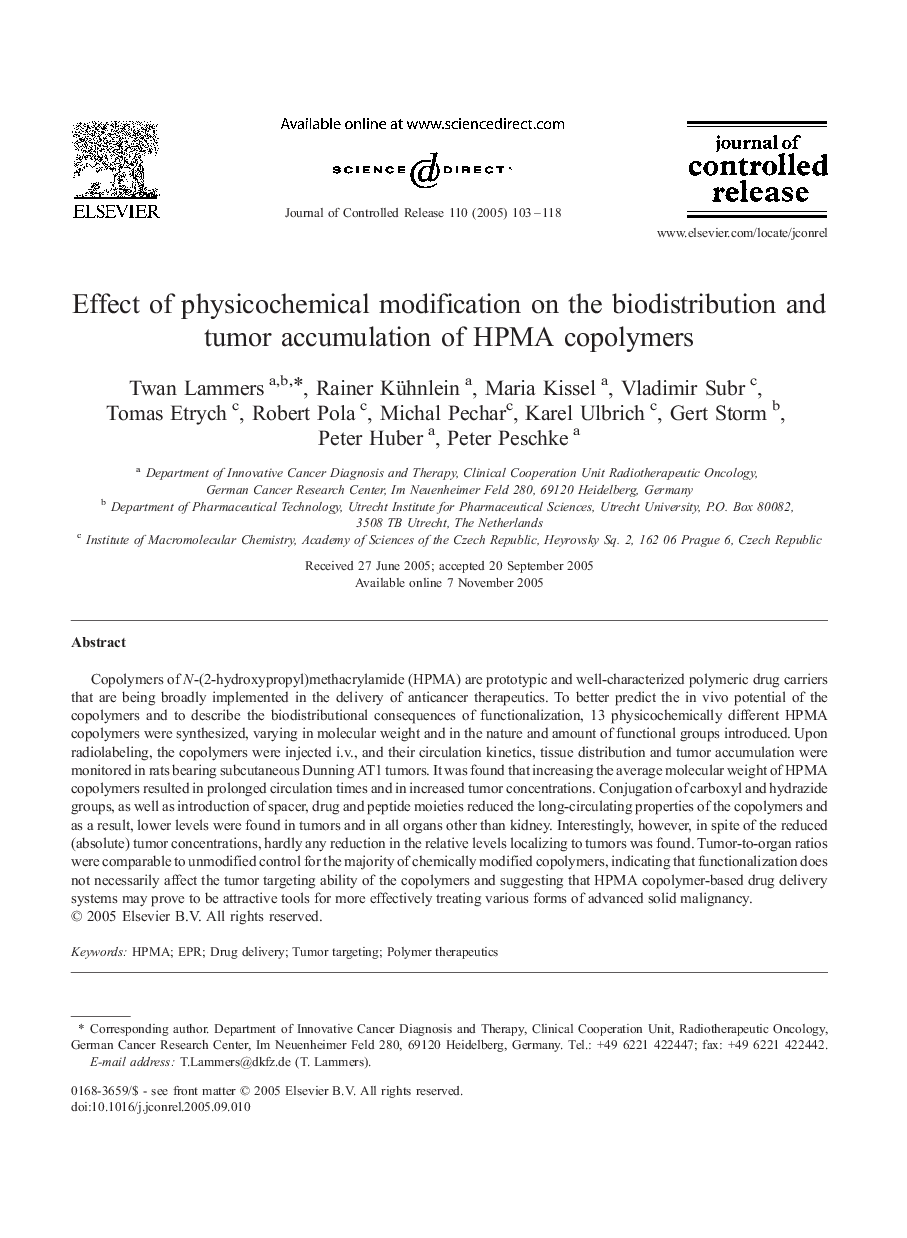| Article ID | Journal | Published Year | Pages | File Type |
|---|---|---|---|---|
| 10613307 | Journal of Controlled Release | 2005 | 16 Pages |
Abstract
Copolymers of N-(2-hydroxypropyl)methacrylamide (HPMA) are prototypic and well-characterized polymeric drug carriers that are being broadly implemented in the delivery of anticancer therapeutics. To better predict the in vivo potential of the copolymers and to describe the biodistributional consequences of functionalization, 13 physicochemically different HPMA copolymers were synthesized, varying in molecular weight and in the nature and amount of functional groups introduced. Upon radiolabeling, the copolymers were injected i.v., and their circulation kinetics, tissue distribution and tumor accumulation were monitored in rats bearing subcutaneous Dunning AT1 tumors. It was found that increasing the average molecular weight of HPMA copolymers resulted in prolonged circulation times and in increased tumor concentrations. Conjugation of carboxyl and hydrazide groups, as well as introduction of spacer, drug and peptide moieties reduced the long-circulating properties of the copolymers and as a result, lower levels were found in tumors and in all organs other than kidney. Interestingly, however, in spite of the reduced (absolute) tumor concentrations, hardly any reduction in the relative levels localizing to tumors was found. Tumor-to-organ ratios were comparable to unmodified control for the majority of chemically modified copolymers, indicating that functionalization does not necessarily affect the tumor targeting ability of the copolymers and suggesting that HPMA copolymer-based drug delivery systems may prove to be attractive tools for more effectively treating various forms of advanced solid malignancy.
Related Topics
Physical Sciences and Engineering
Materials Science
Biomaterials
Authors
Twan Lammers, Rainer Kühnlein, Maria Kissel, Vladimir Subr, Tomas Etrych, Robert Pola, Michal Pechar, Karel Ulbrich, Gert Storm, Peter Huber, Peter Peschke,
